Union Street ECOheritage Project
There were two 1892 heritage homes located side by side on the 50' by 132' lot. To make the project financially viable, developers Dick Hellios and Karli Gillespie increased the densification to seven units: two in each heritage unit; one adjacent and behind each heritage unit; and one laneway unit on the south end.
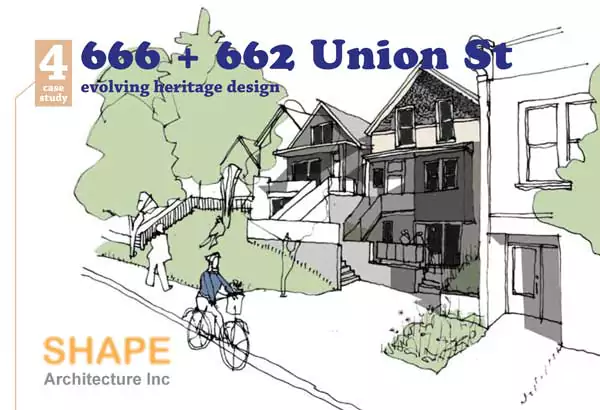
This densification was not accomplished by demolishing and rebuilding from scratch, but rather by upgrading the heritage homes to reflect contemporary social and economic realities. New construction is highly energy efficient with an aesthetic that is derived from, but not imitative of the existing structures. This balances the energy inefficiencies of the heritage homes, while still preserving their cultural and ecological value for the community and surrounding neighbourhood.
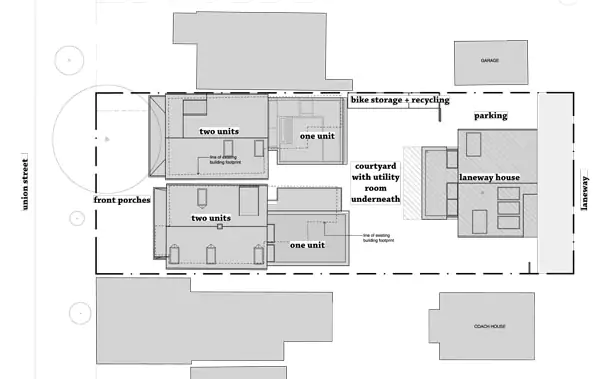
Project Concept
A central complex housing green technologies such as solar hot water and heat pumps provide heat, water and services to each unit. The mechanical systems will allow easy connection to future district energy systems. An electric car-share program is proposed to reduce the transportation footprint of residents. Garden recycling and composting will reduce waste production of the seven units to less than that of the two heritage homes (text: Vancouver Heritage Foundation).
Project design was by Shape Architecture of Vancouver, BC. The project was designed for sustainability: the five new units are being built to EnerGuide 90+ and the two heritage units to very high levels of efficiency.
Complex Logistics
Josh Klein, project supervisor, Natural Balance Home Builders, explains:
"The lot width is only 50' wide, yet each Heritage building measures over 21', not including roof overhangs. To excavate for the new foundations and sunken utility room, we carefully slid each building to the south end to provide sufficient space for the backhoe to operate."
"Once the site was excavated to the two depths, we slid the buildings back to their original location, lifted them to a height where we could build the new insulated foundations underneath. Nickle Bros. did a great job with the moving and cribbing."
Excavation and Shotcreting
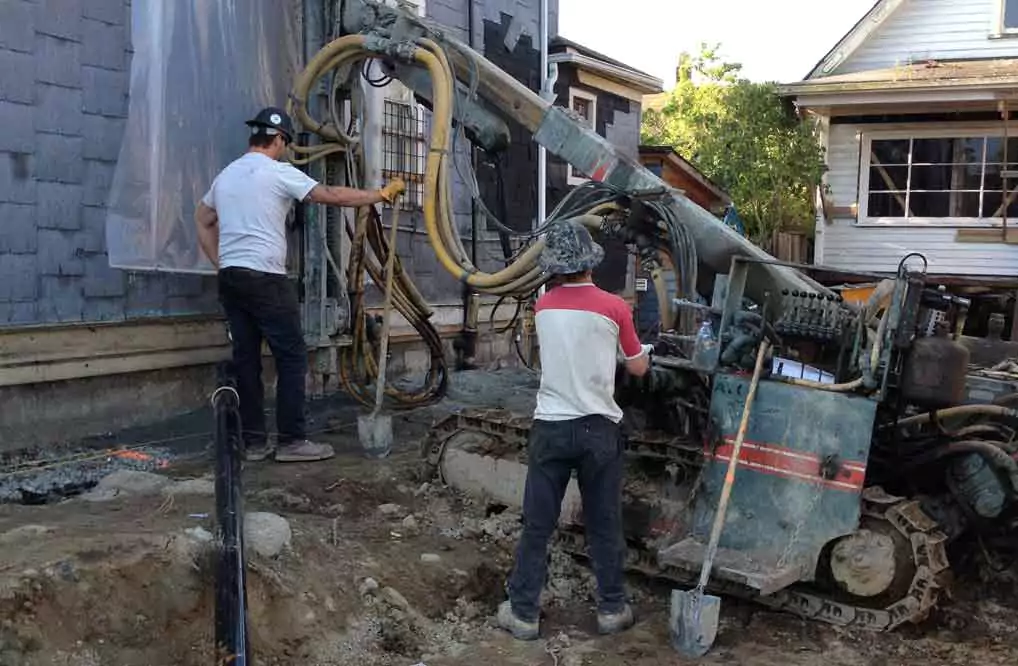
The new foundations were located within 12" of the property lines on each side. Pilings were driven into the ground 5' on centre to support neighbour's soil.
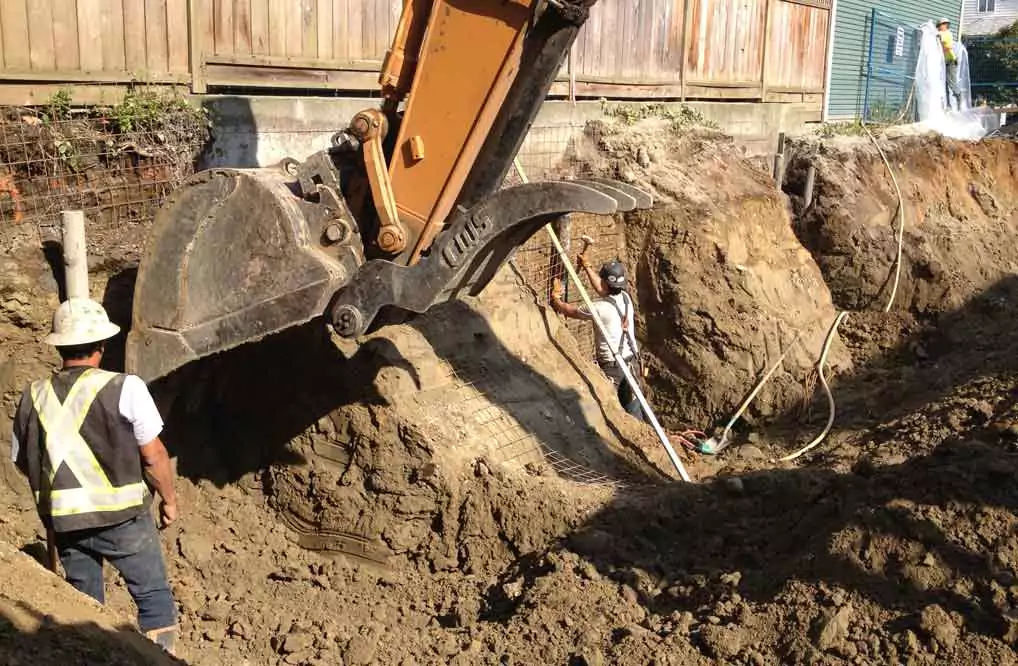
The excavator digs out sections three pilings wide (about 10' wide) to enable the installation of the wire mesh prior to shotcreting.
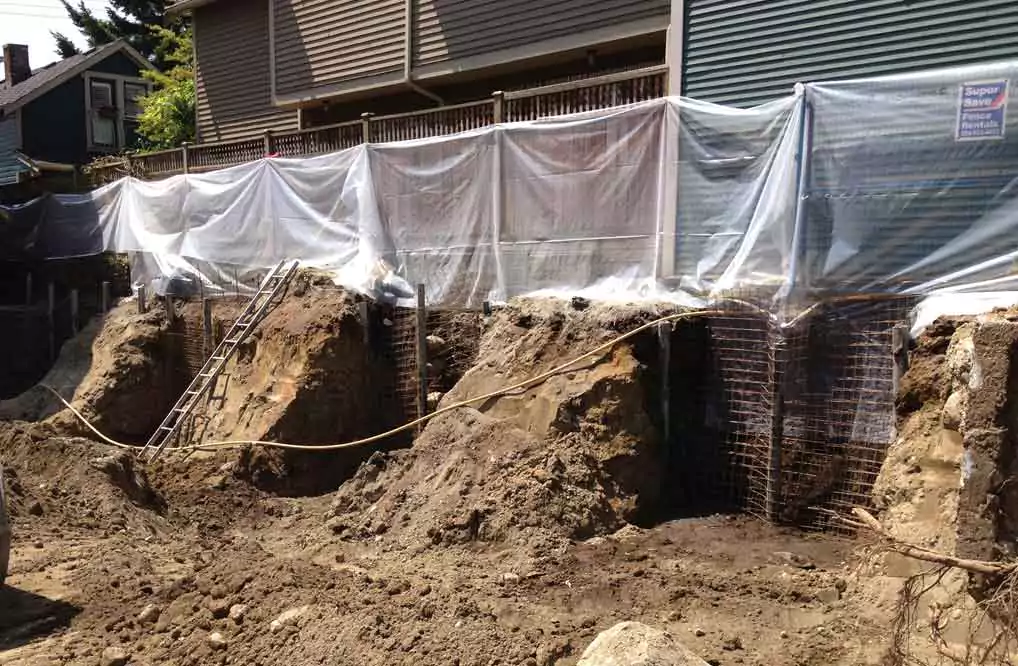
The wire mesh is installed around three pilings so that the ground behind is adequately supported.
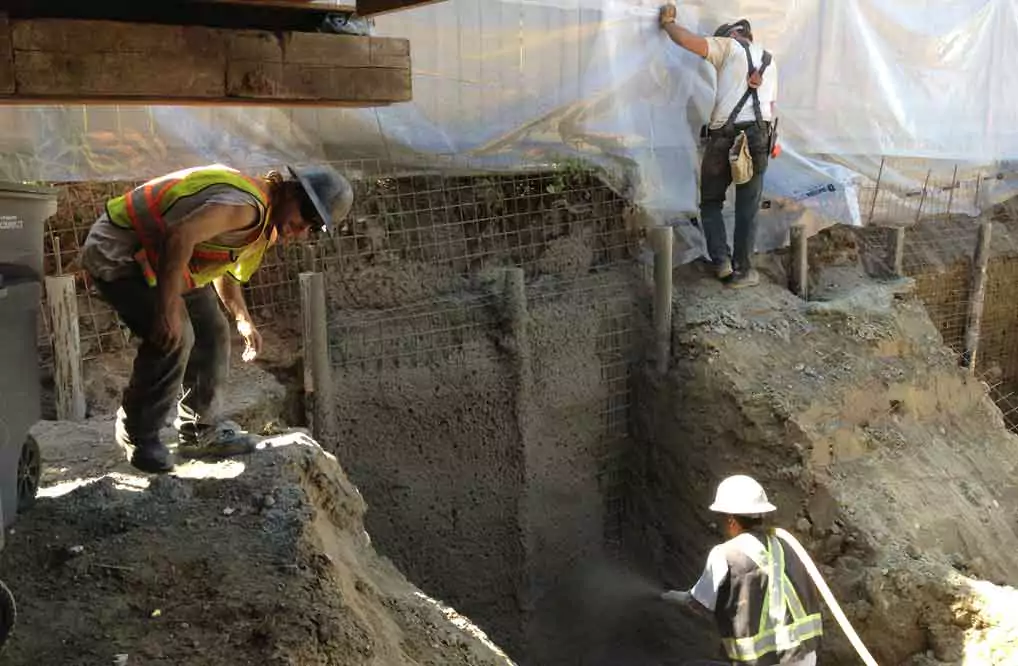
The shot crete is applied to the wire mesh in the 10' excavated sections.
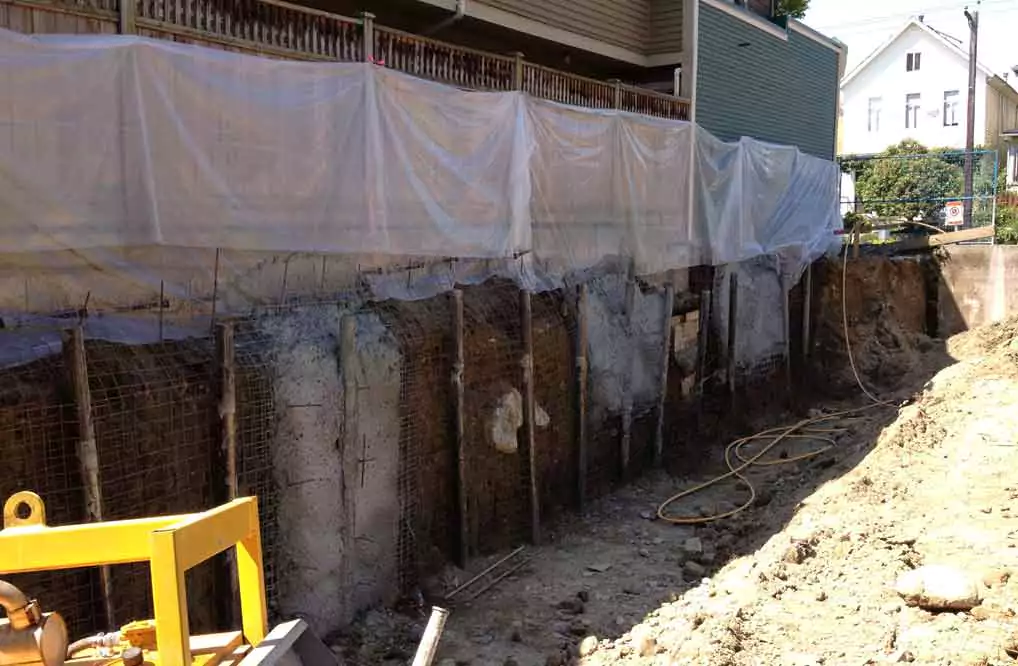
The excavator removed the soil between the shot screeded sections and wire mesh was applied.
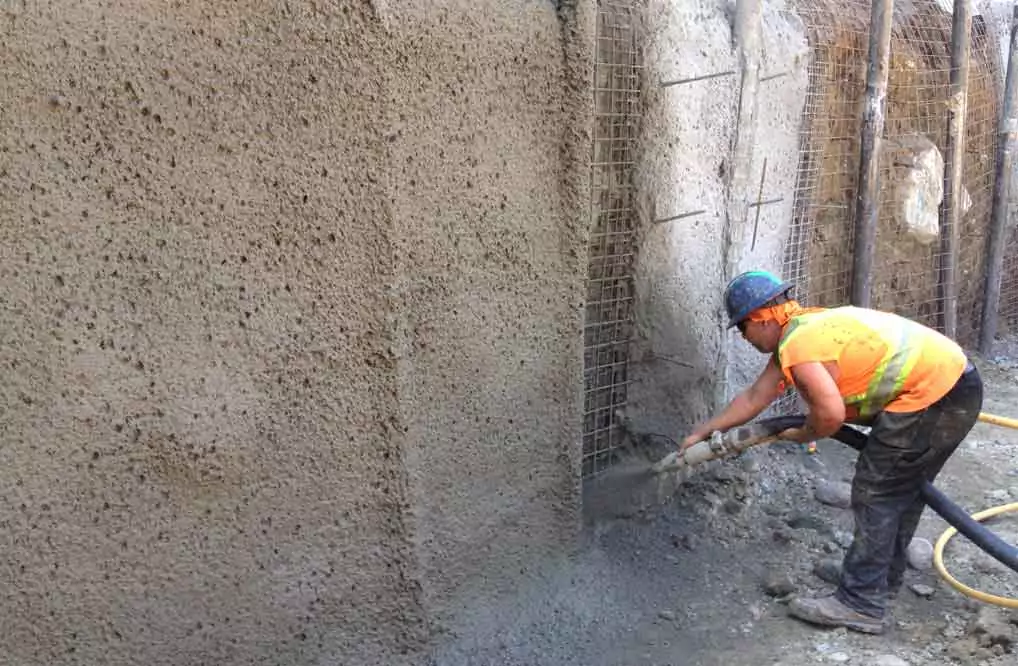
Stucco is applied to the remaining sections to support the neighbour's ground and foundations.
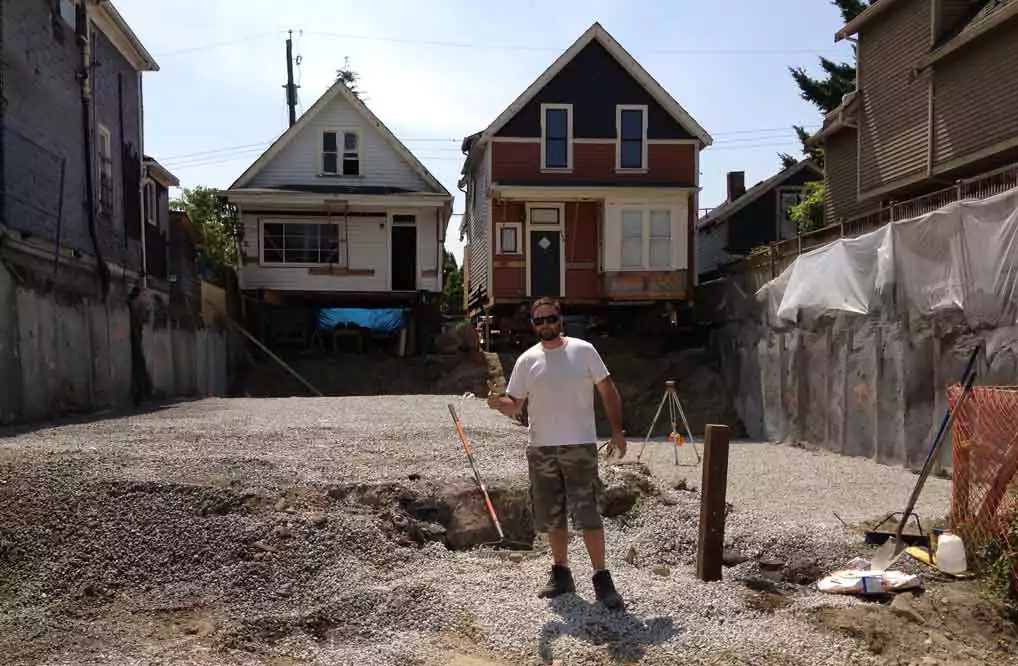
The completed excavation looking south showing the two heritage buildings temporarily moved to the south end of the property.
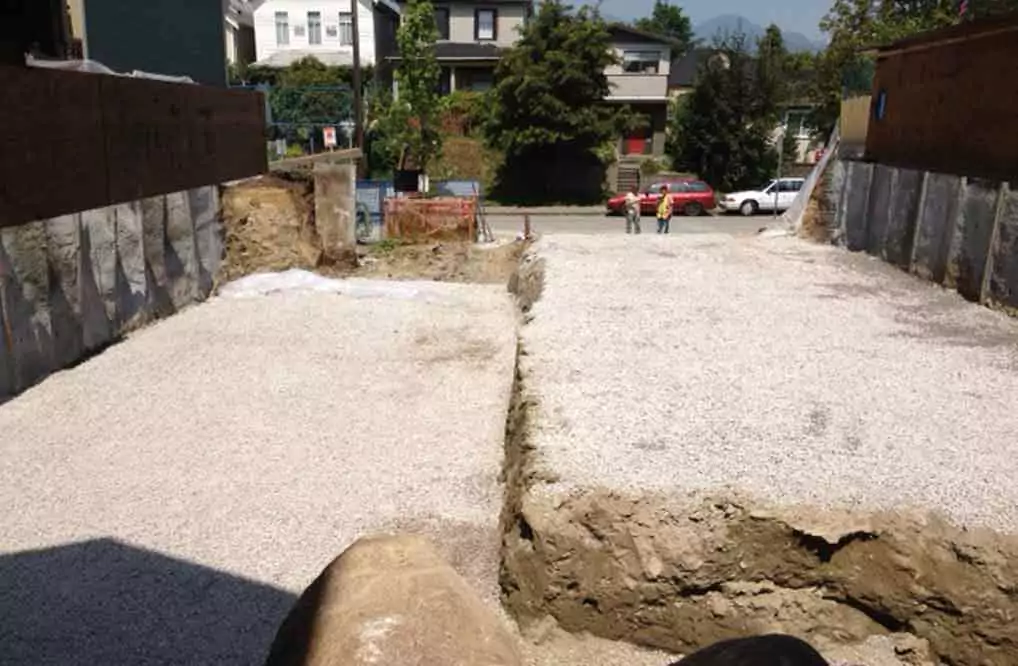
This view of the completed excavation looking north. Note the height difference of 4' between the two foundations. Also note the 4" drainage layer to prevent rising damp.
ICF Foundations
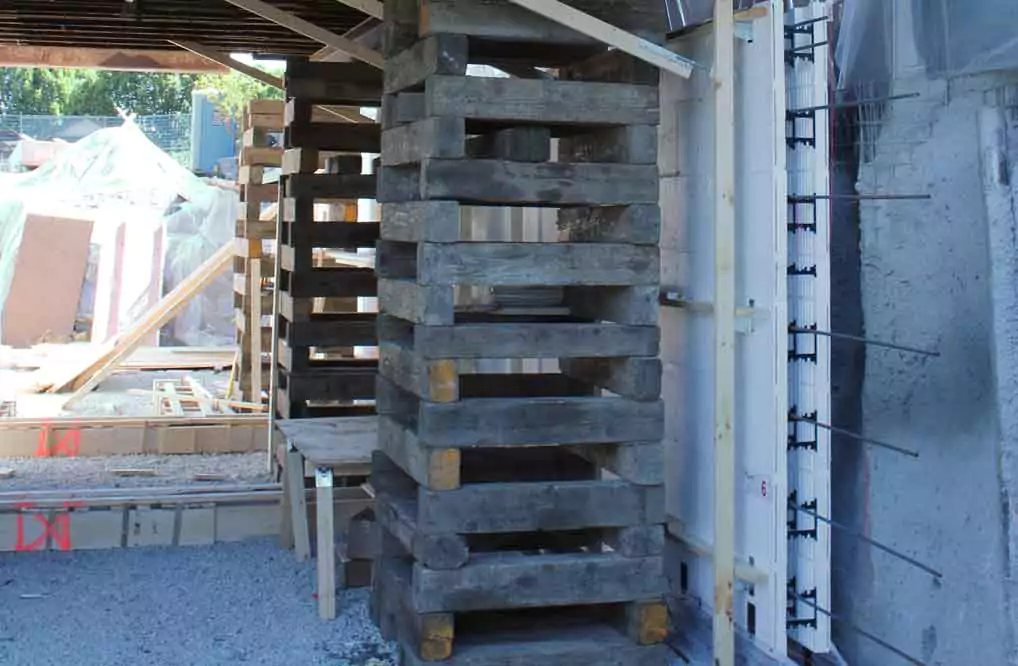
The west wall of the west foundation is located inches from the shotcrete and inches from the cribbing. Note the Fastfoot® footing.
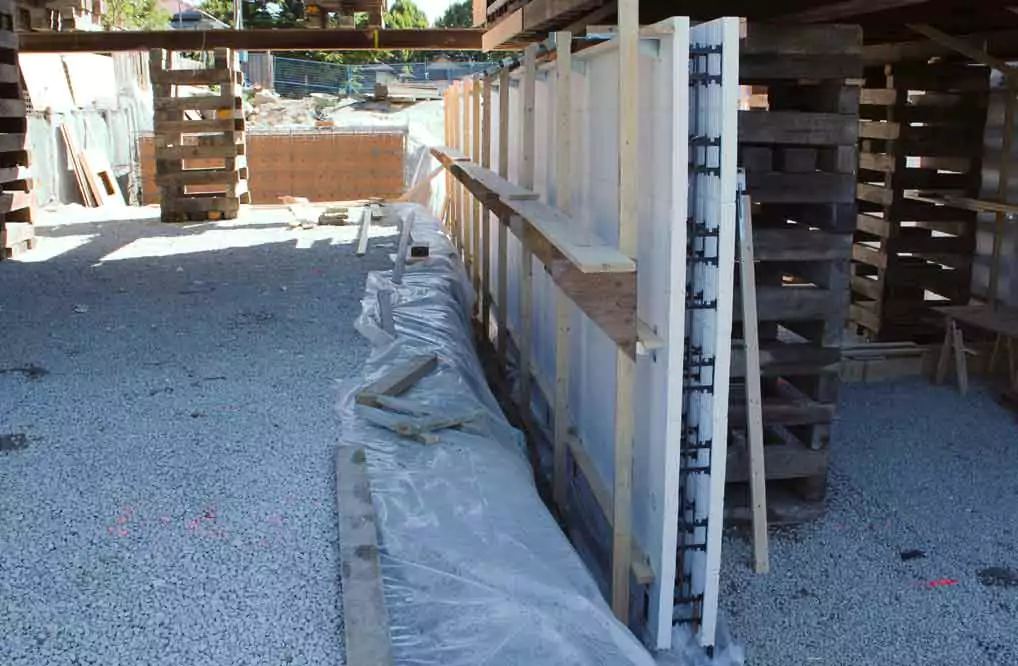
This east wall (10' tall) of the west building is located next to the 4' elevation change. Note the Zont™ bracing in position to hold the wall flat.
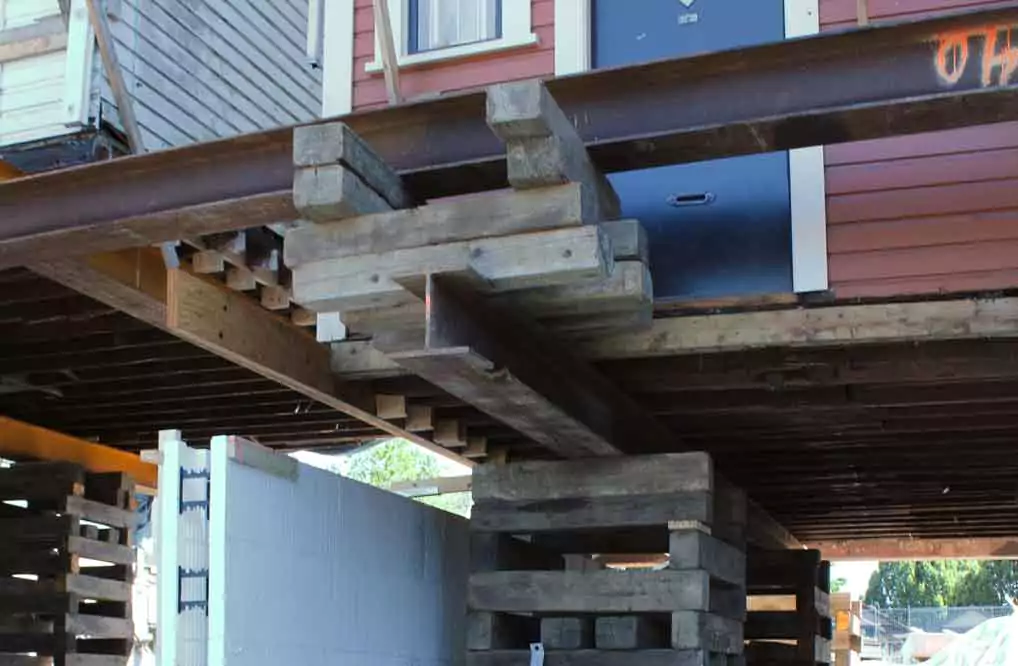
The cribbing was done by Nickle Brothers. Note the method used to support the east building 4' higher so that the cribbing did not hit the interior footings.
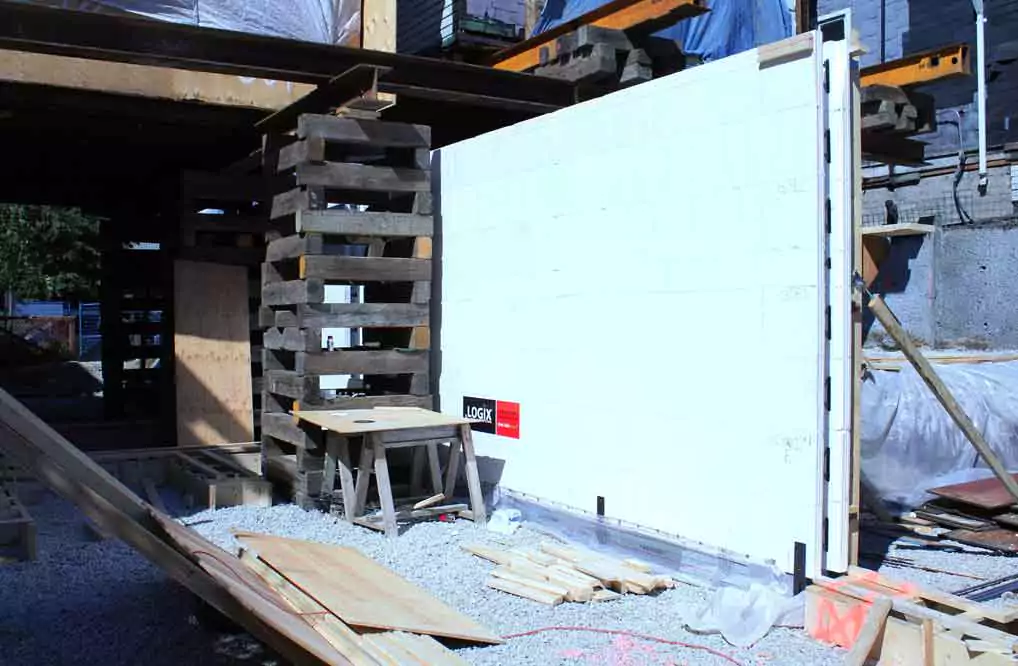
Note how effective the Zont™ (horiZONTal) Bracing System is in producing a flat and plumb wall.
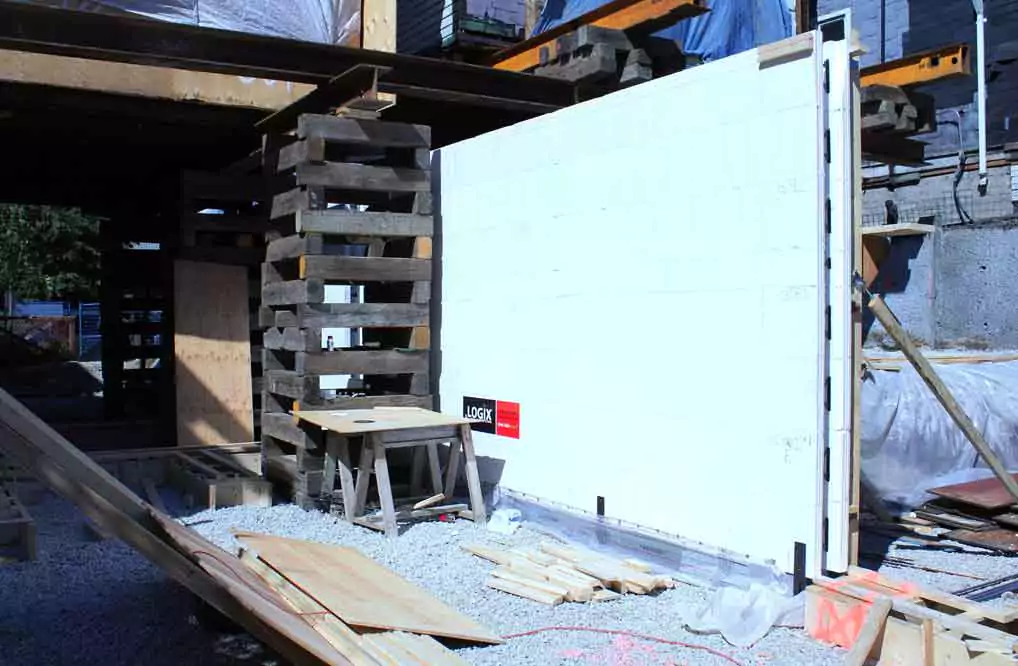
Note how effective the Zont™ (horiZONTal) Bracing System is in producing a flat and plumb wall.
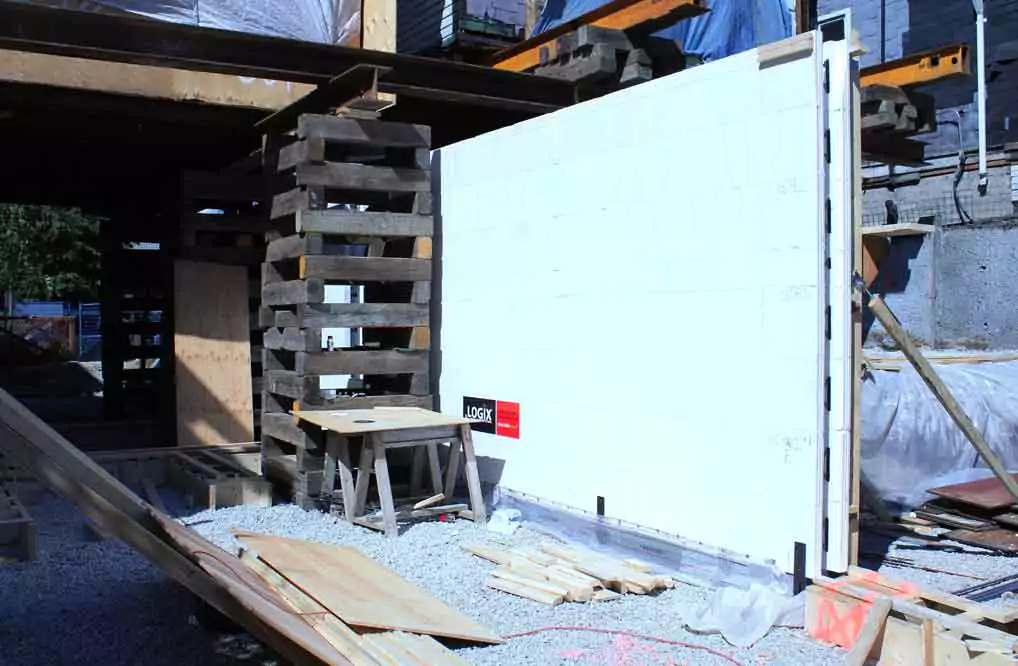
Note how effective the Zont™ (horiZONTal) Bracing System is in producing a flat and plumb wall.
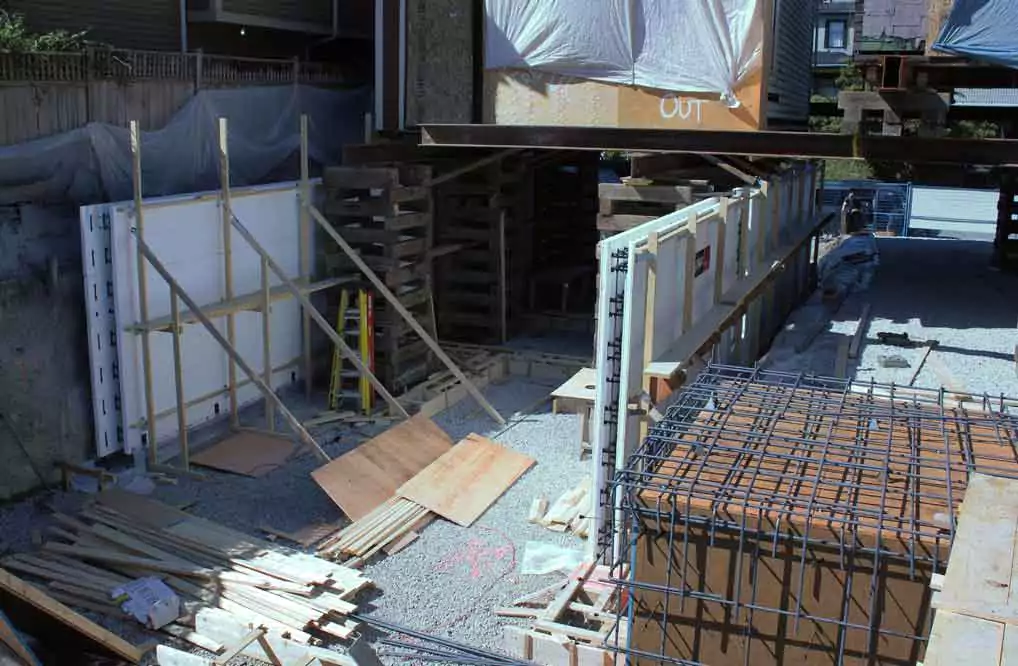
This view from the south of the west foundation also shows an underground utility room for all of the seven units.
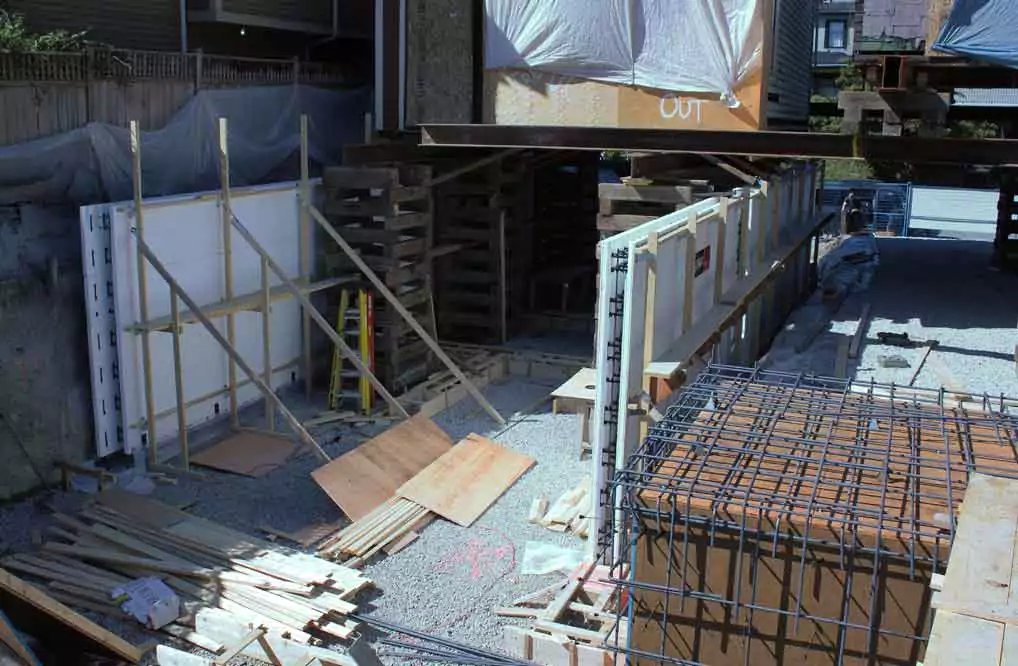
This view from the south of the west foundation also shows an underground utility room for all of the seven units.
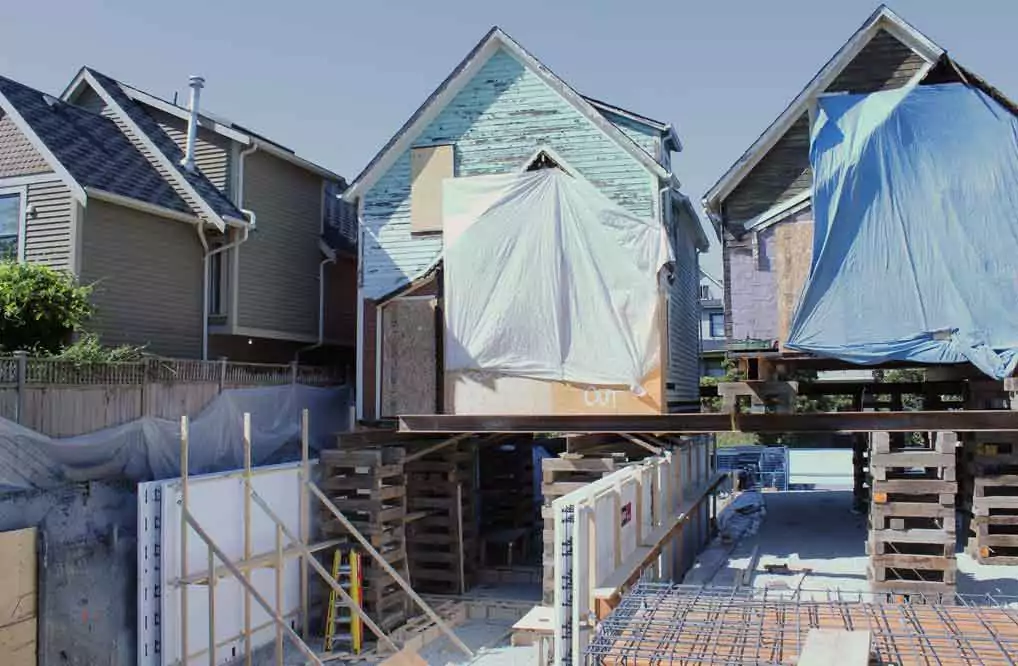
A delicate balancing act: the two heritage buildings supported by the cribbing and steel beams.
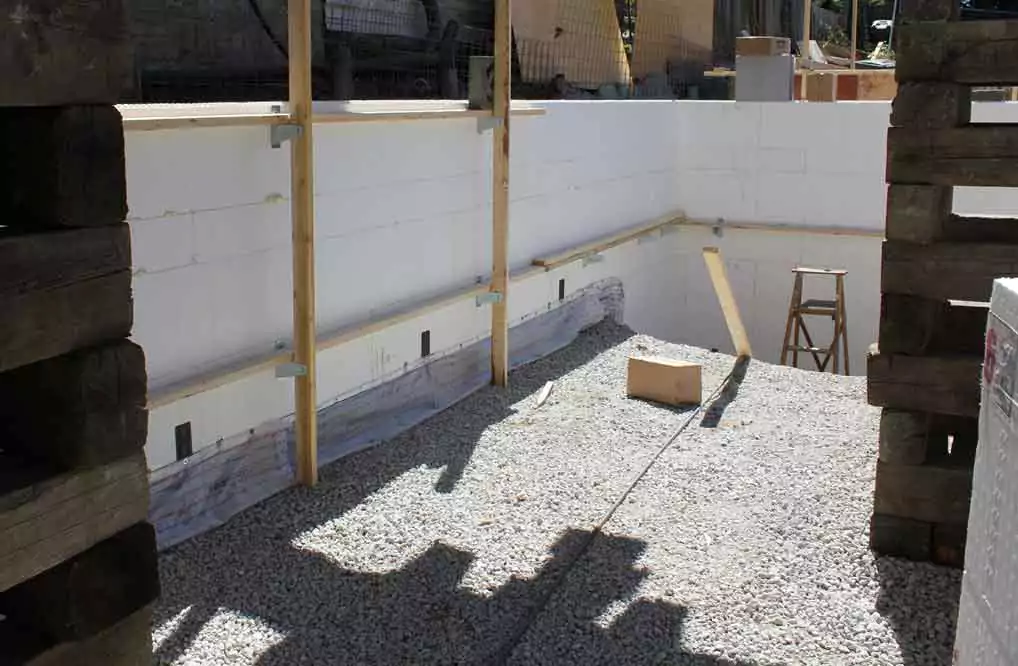
The foundation for the east building was 30" narrower than the heritage structure above, so enable a public walkway between the two buildings.
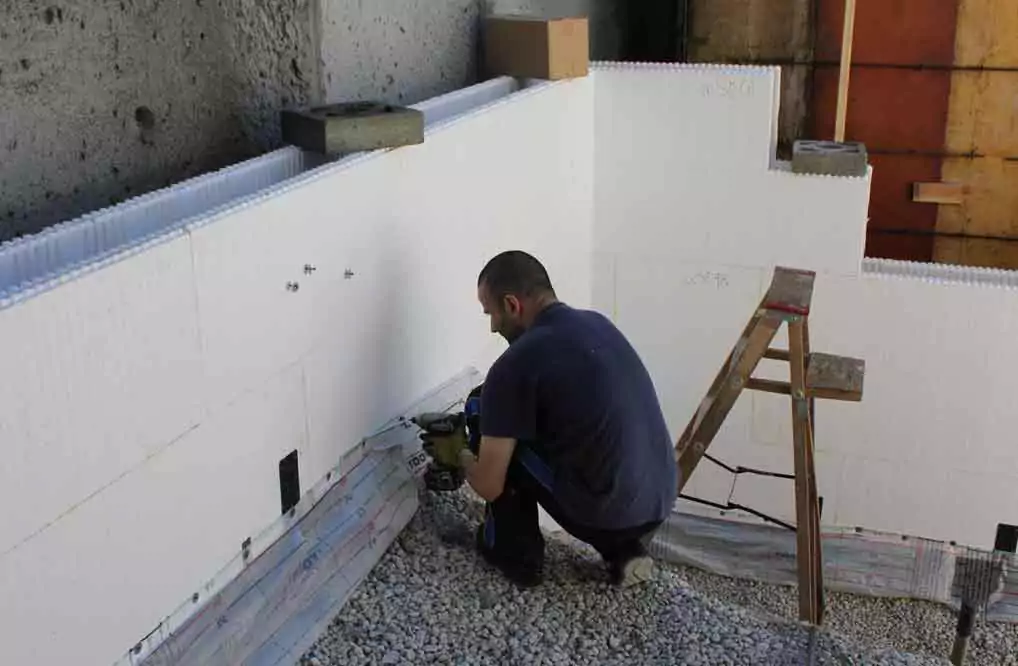
The foundation is manufactured in components 13'-4" long with the Fastfoot® and steel pre-installed. Fab-Form employee Ljuba buttons up the Fastfoot® overlaps.
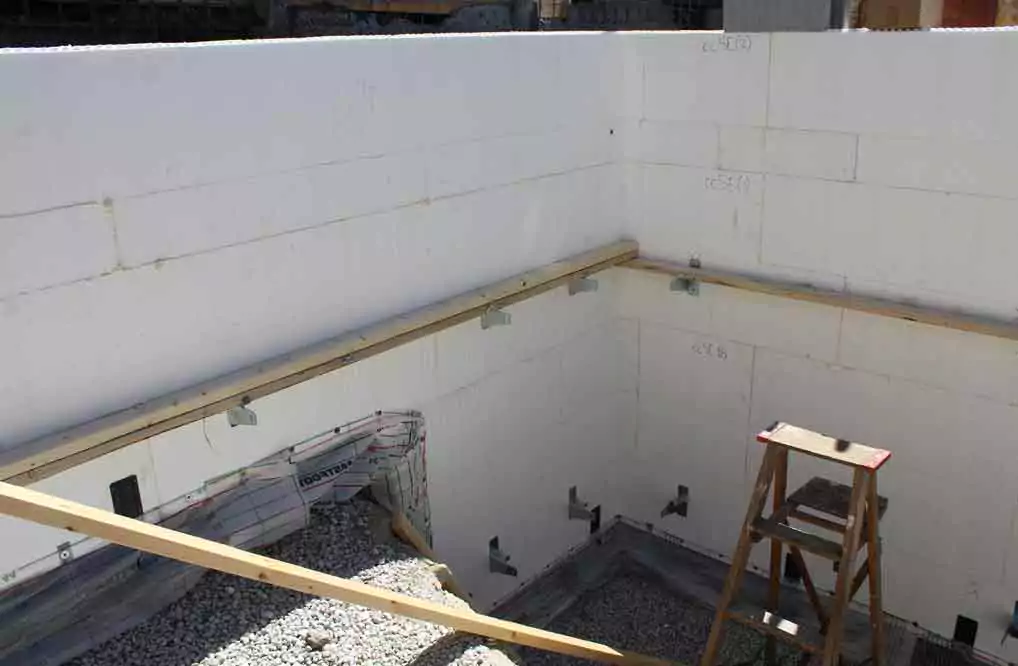
A 4' step at the end of this foundation was required to accomodate the underground utility room. Fastfoot® forms this step without a single piece of lumber.
Concrete Pour
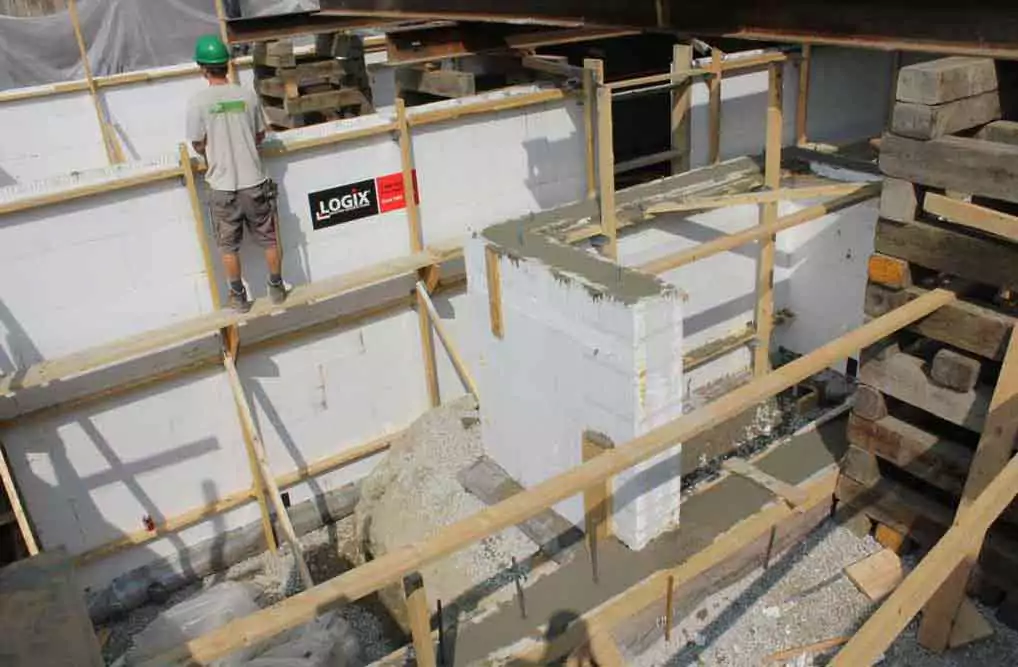
Note the formwork congestion. An interior footing can be seen squeezed between the east foundation wall and cribbing.
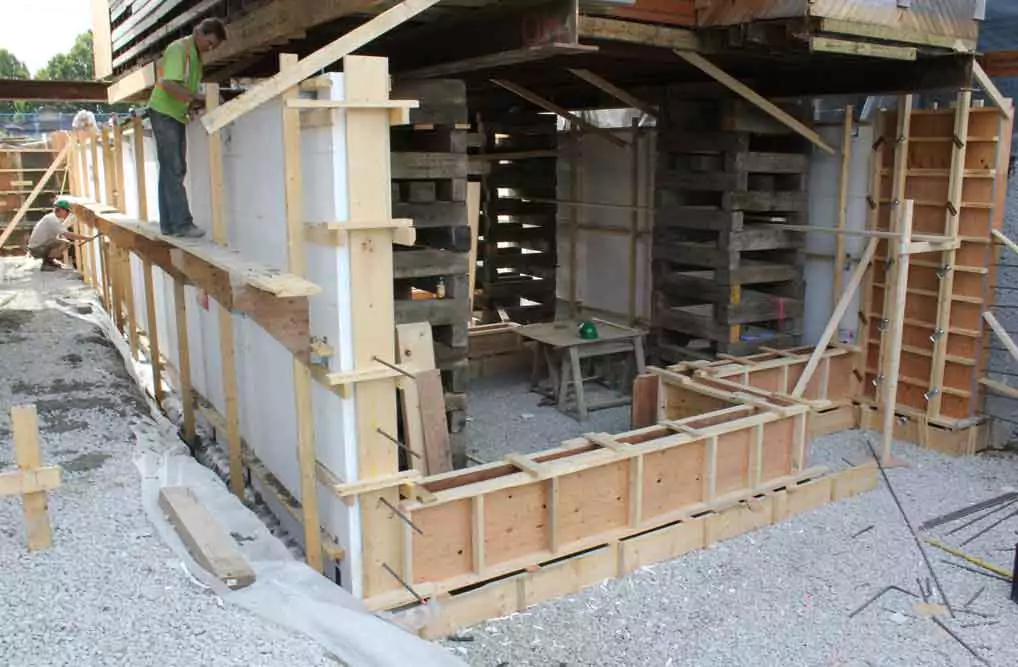
Note the multiplicity of formwork: ICF wall forms, fabric footing forms, architectural plywood wall forms for the suite entrance on the right and plywood stem wall forms.
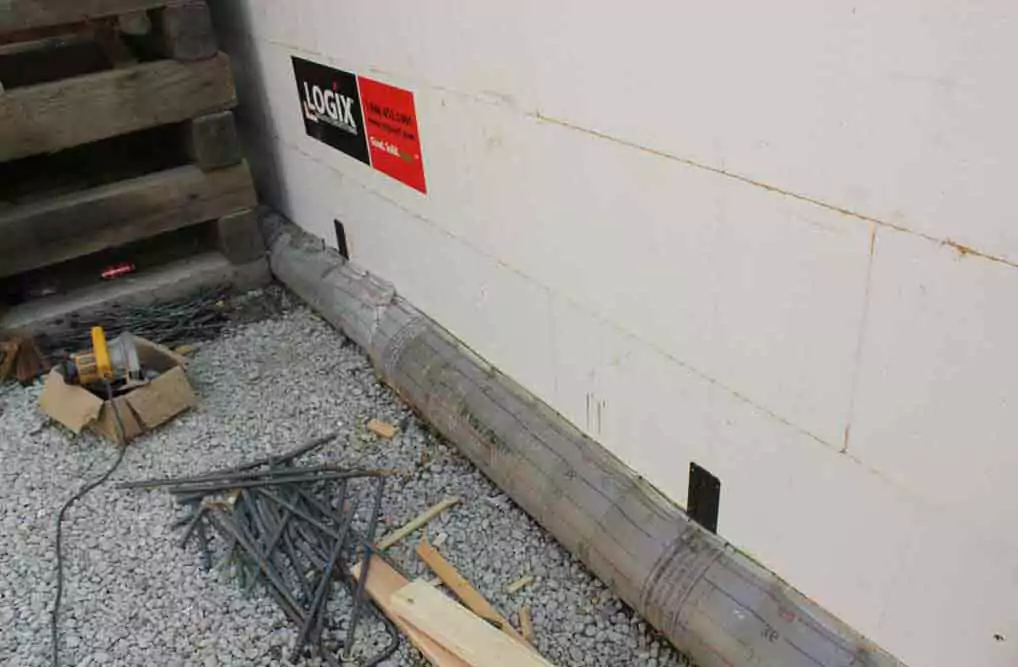
The Fastfoot® monopour system was perfect for this congested site where the ICF wall form was located just inches from the shotcreted excavation wall and cribbing.
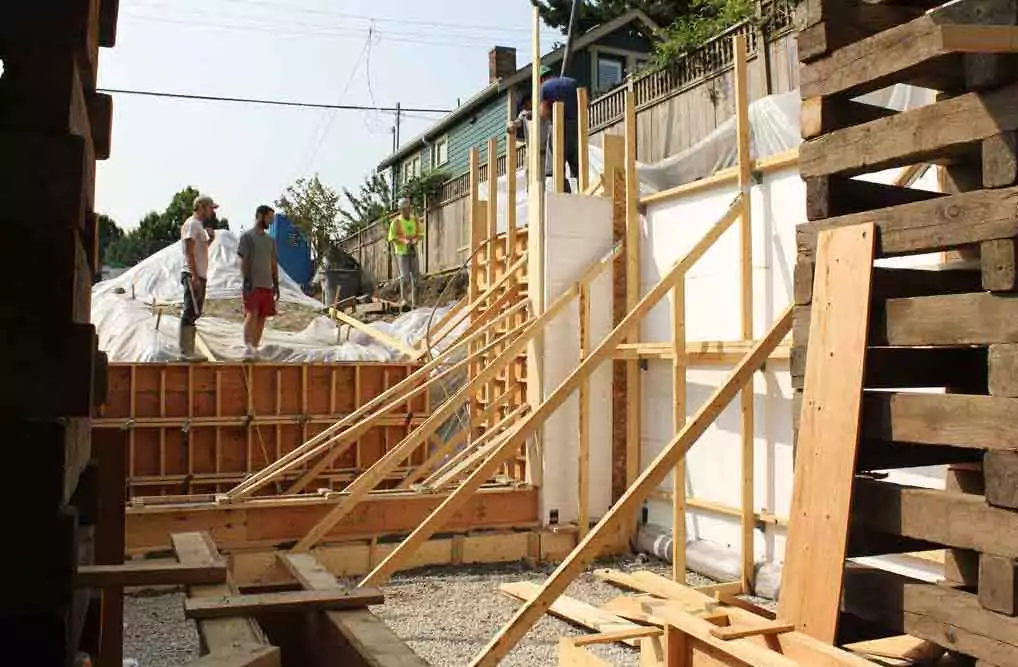
A 2' ICF return forms the south end of the west building. An outside patio is located between the stem wall and the retaining wall located in the distance.
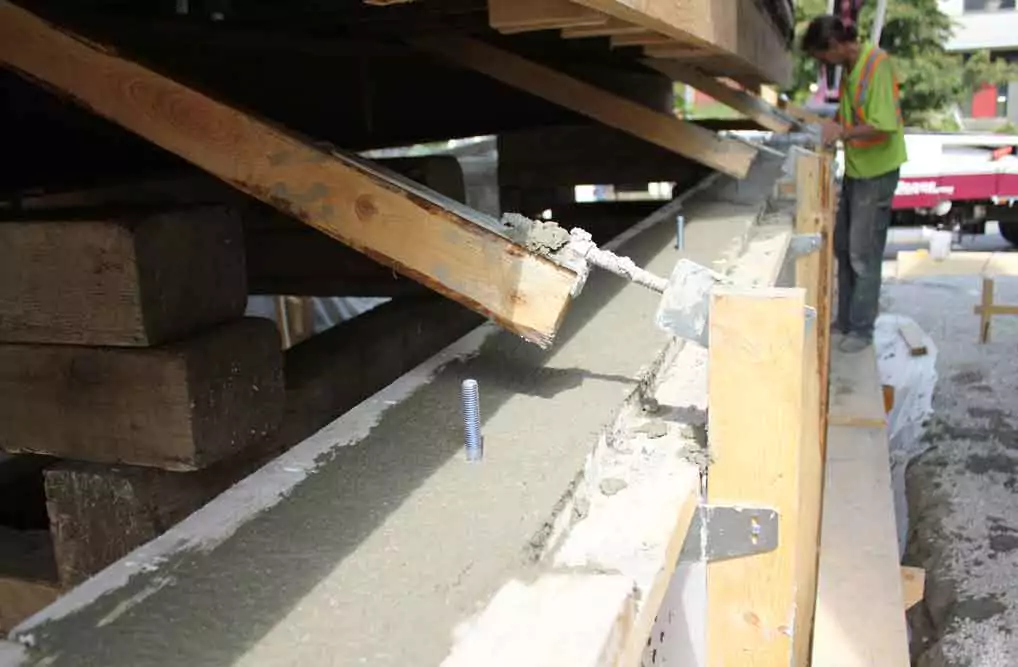
Zuckle™ wall aligners were supported from the floor structure. Only 16" of space between the floor joists and top of wall made placing concrete a challenge.
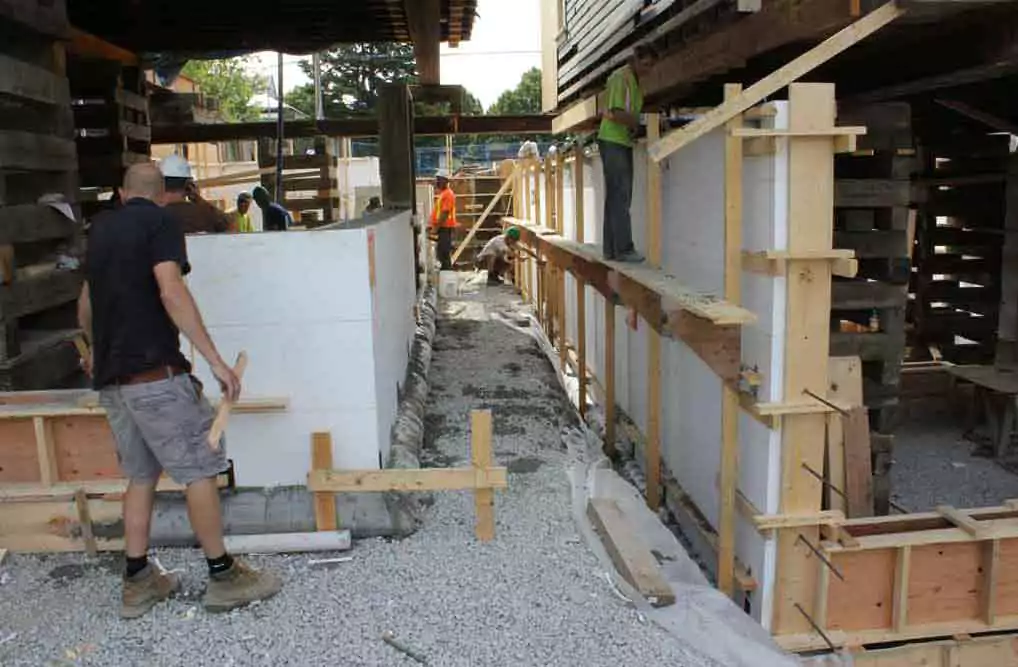
The space between the two foundations will become a walkway to the common area between the two heritage houses and the laneway house in the rear.
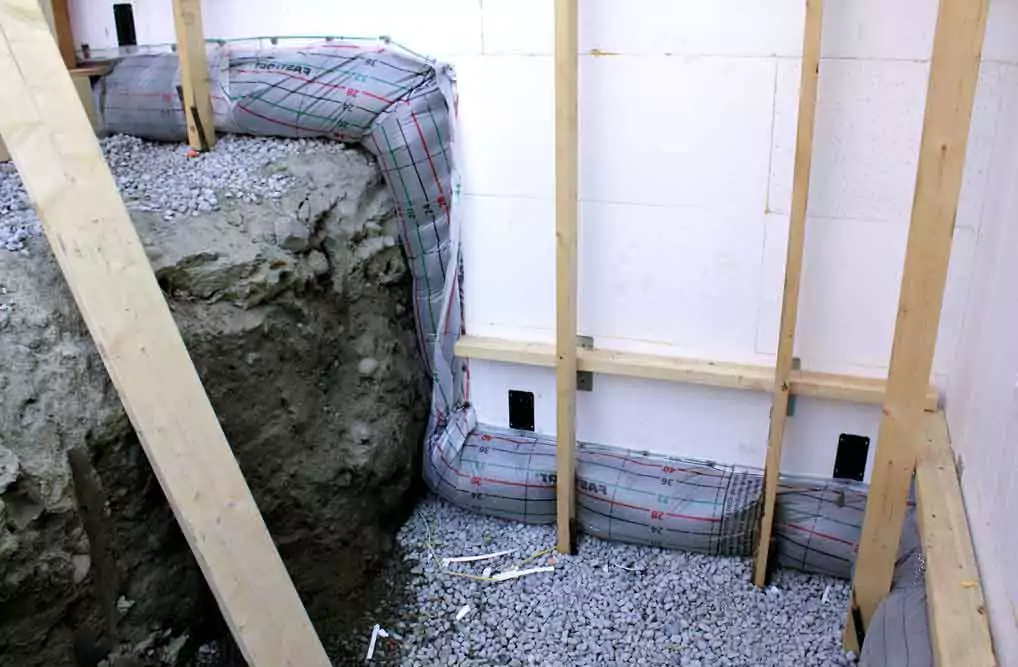
This 4' step was poured without a single piece of lumber, hence no waste. Compare this with plywood formed steps.
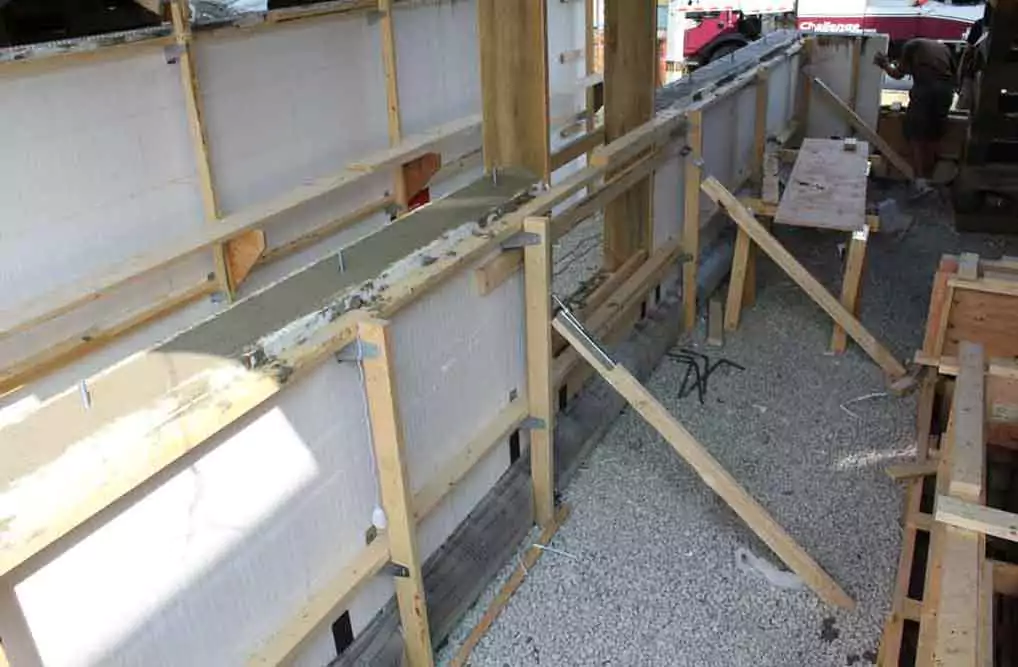
Premanufactured door and window bucks were set into the ICF foundation components to reduce construction time.
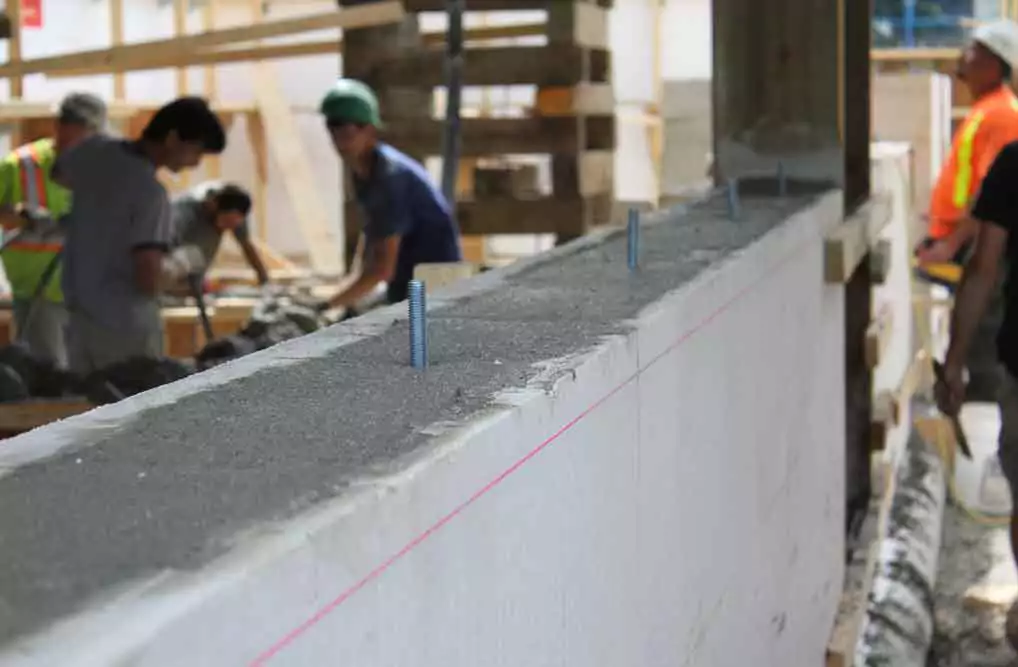
Stringlines were used to accurately align the wall both before and after the pour.
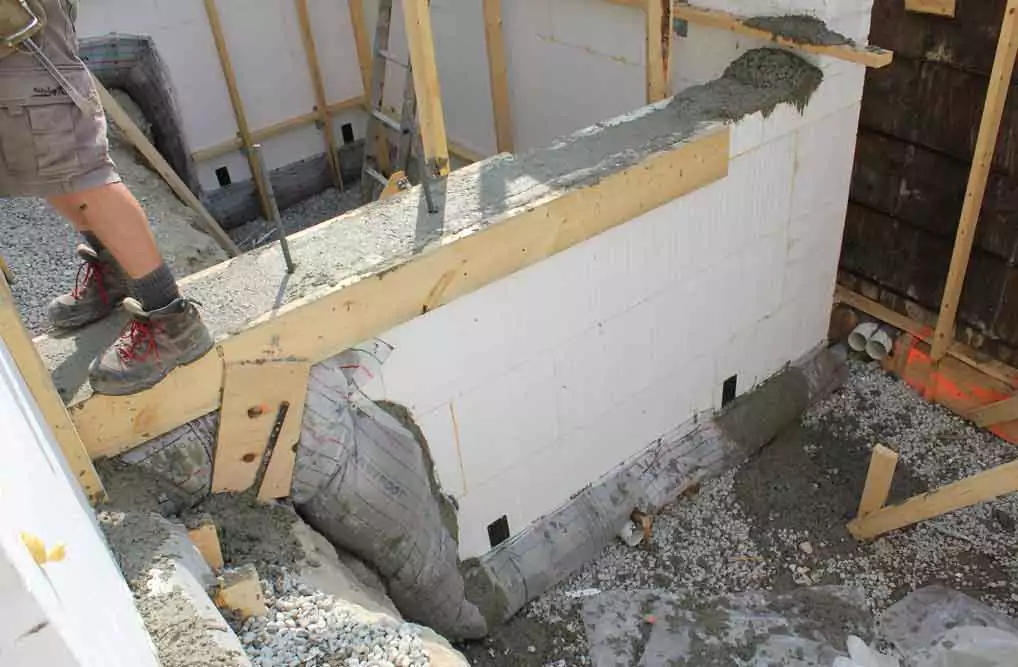
The south end of this foundation dropped off 4' to allow the below grade utility room for the seven units.
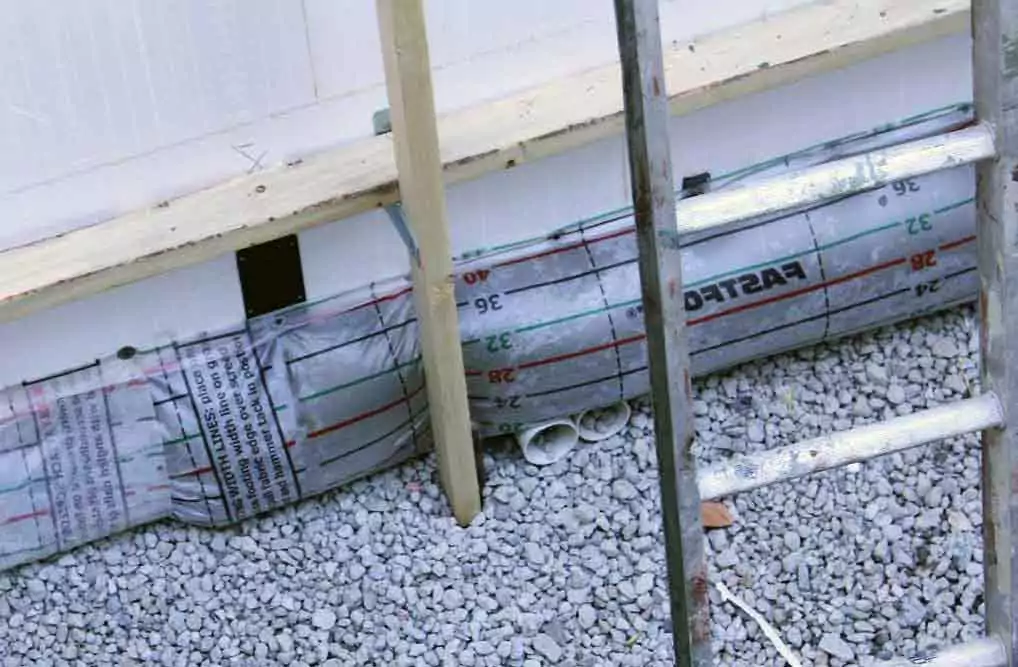
As there was insufficient space for a drainage pipe on the outside of the footing, the building envelope engineer required 2" pipes under the footing, 8' on centre.